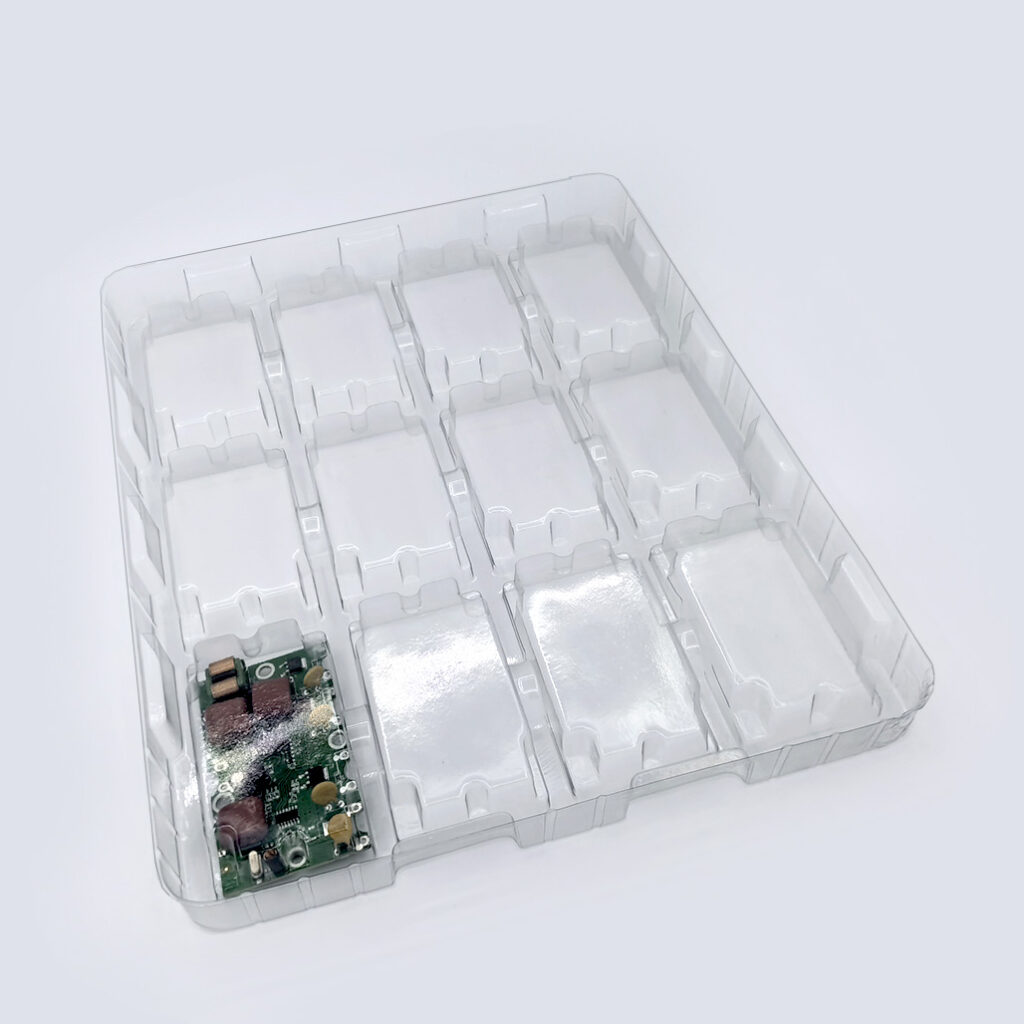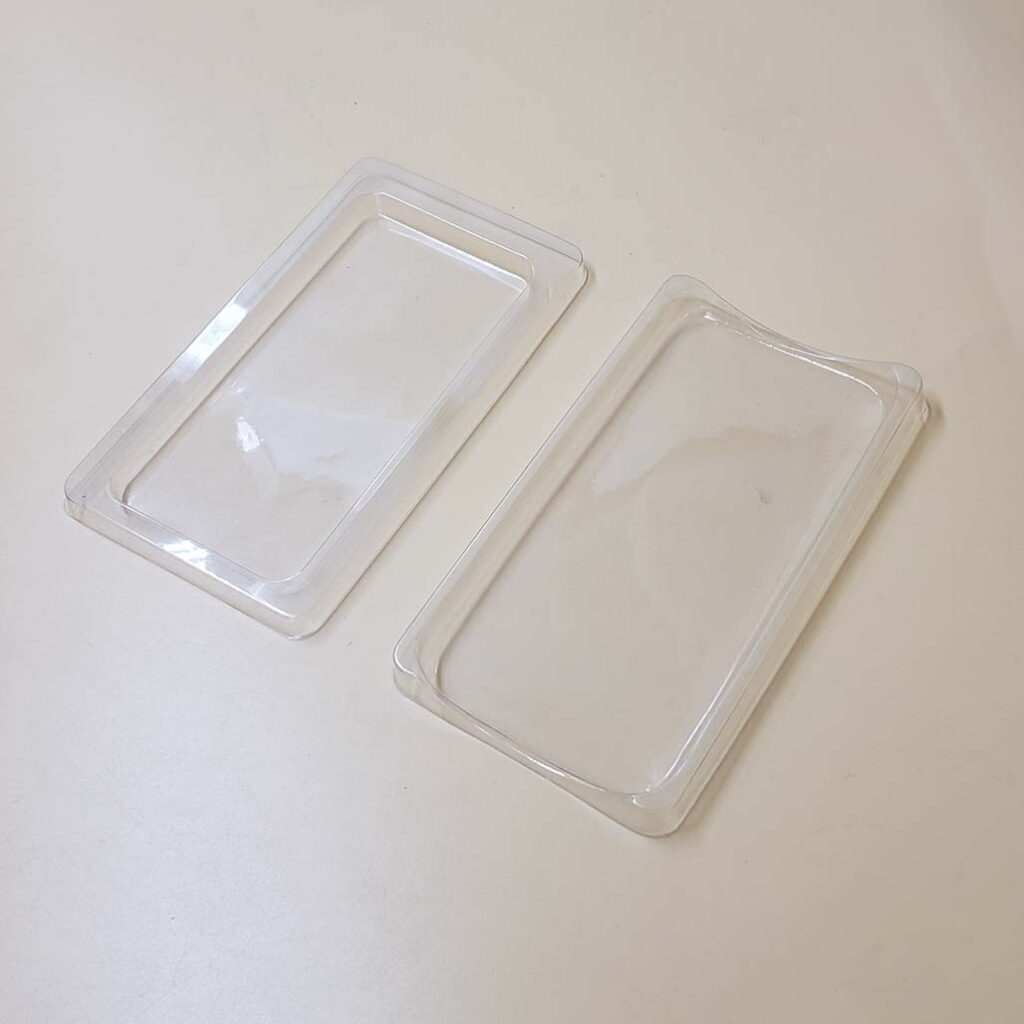The common materials for vacuum formed trays include the following:
- PVC (polyvinyl chloride):
Features: It has good flexibility and transparency, and the price is relatively low.
Application: Commonly used for packaging and transportation of products with low appearance requirements and cost sensitivity. For example, packaging for some industrial components.

- PET (Polyethylene terephthalate):
Features: High strength, good transparency, strong chemical corrosion resistance.
Application: Suitable for high demand packaging fields such as food and medicine. For example, blister tray packaging for drugs.

- PS (polystyrene):
Features: Good rigidity and easy molding.
Application: Commonly used for packaging and transportation of electronic products, toys, etc.

- PP (polypropylene):
Characteristics: It has high heat and chemical resistance, is non-toxic and odorless.
Application: It can be used for packaging food contact products and items that require transportation in high-temperature environments.

- HIPS (High Impact Polystyrene):
Features: While maintaining the rigidity of polystyrene, it improves its impact resistance.
Application: Commonly used for packaging and transportation of fragile items, such as protective trays for glass products.
For example, in the electronics industry, due to the sensitivity of products to static electricity, anti-static PS material vacuum trays may be used; In the food industry, in order to ensure safety and hygiene, PP material vacuum formed trays are usually preferred.



